
Regular, consistent and balanced exercise has so many health benefits that go beyond our appearance, though that’s definitely a nice bonus.
Feeling strong and capable boosts our confidence, and taking action toward supporting our long-term health can foster a deep sense of personal pride and self love.
The strength and endurance we gain from training regularly make us more resilient in the face of challenges – both physical and mental – and make big gains in lowering our stress.
There are many different types of exercise, all with complementary health benefits. Here are some examples:
Aerobic (cardio) exercise: examples include walking, running, cycling, swimming and activities that involve movements of the large muscles of the body for sustained periods of time which improves cardiovascular health.
- Muscle-strengthening/resistance training exercise: like resistance training against gravity with your own bodyweight or using bands, weights or machines improves muscle strength, endurance, power, and mass.
- Bone-strengthening exercise: like running, playing sports like basketball, resistance training, or jumping rope, improves bone health and strength.
- Balancing exercise: like walking backwards, standing on one leg, yoga, and tai chi strengthen intrinsic stabilizing muscles, and limit your risk of falling.
- “Multicomponent” exercise: like running, dancing, or playing sports like tennis includes at least two of the above types of activity.
Exercise intensity can be rated by the following:
- Light activity: you don’t feel like you’re exerting yourself
- Moderate activity: you can talk comfortably, but not sing
- Intense activity: you can say a few words, but not full sentences (1 minute of intense activity is the approximate equivalent to 2 minutes of moderate activity)
Here are just 7 great reasons to make exercise a regular part of your life.
1. Exercise increases your resilience and lowers stress

We get more mentally tough as we overcome our internal resistance to push through difficult things, and we get some pretty great physical benefits as well.
Exercise itself is actually a form of stress, but when a healthy person trains regularly their system gets stronger by virtue of handling that exercise induced stress over time.
Cardiovascular exercise creates positive adaptations in the heart and its ability to pump more blood with each contraction over time, which lowers your heart rate during activity and during rest.
A lower heart rate is a sign of a healthy cardiovascular system, and good “parasympathetic tone” in the nervous system, increasing your ability to relax, focus, and recover from stress – including the positive stress of intense exercise.
Exercise also releases feel-good chemicals that flood the brain – elevating your mood, and making you feel happier. This is a powerful and natural mood enhancer, especially for people who suffer from anxiety and depression(1). Exercise has helped me personally my entire life, from back when I started running in high school and it helped manage my depression. I’ve also found great benefit in having personal goals to focus on physically that gave me an outlet to manage difficult feelings like anxiety and negative thinking.
2. Exercise helps you build and maintain lean muscle
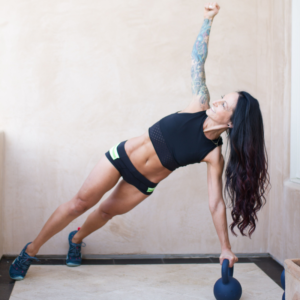
Muscle is also an important regulator of your body composition. With every pound of muscle you build, you will burn 35-50 more calories a day. So, if you gain 4.5 pounds of muscle, you will burn 150 additional calories per day, or 4500 additional calories per month, for a loss of around 15 pounds a year.
Now think of the inverse of that. If you stop exercising, a smaller muscle mass coupled with a more sedentary lifestyle means you will burn less calories every day even though you probably would still consume the same amount of food. So your body fat would likely increase as a result.
Muscle is also an endocrine organ. It secretes hormones on contraction which may play important roles in the protection against diseases associated with low-grade inflammation, insulin resistance, hyperlipidemia (such as cardiovascular disease, type 2 diabetes, and cancer). (2)
Gaining, and preserving healthy muscle tissue should be a goal with your training, and you can accomplish it with regular exercise, including resistance training where you’re working against resistance (either gravity and your own bodyweight, or resistance equipment like weights, bands or machines) and with cardiovascular exercise.
3. Exercise boosts your immune system

Systemic, low-level inflammation (caused by lifestyle habits, chronic stress, poor diet, etc) is a consistent predictor of disease. Exercise increases levels of cytokines (cell-signaling molecules that aid communication between cells) with anti-inflammatory properties.
This is also one of the reasons you shouldn’t train when you’re sick, as your immune system is already working to resolve something else, and taxing it to come repair muscle tissue can slow down your recovery process (and doesn’t really give you much in the way of strength gains either) (3).
4. Exercise Extends Your Life Expectancy
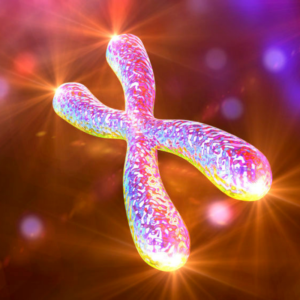
Higher levels of exercise are related to longer telomere length, with athletes tending to have longer telomeres than non-athletes (4)
Regular physical activity substantially reduces your risk of developing coronary heart disease, cerebrovascular disease, hypertension, maturity onset diabetes, becoming overweight or obese, and osteoporosis (5).
Exercising regularly also helps to ensure you’re able to function well as you age, increasing bone density and muscle strength so you can reap the rewards of some of the aforementioned benefits.
5. Exercise improves sleep quality
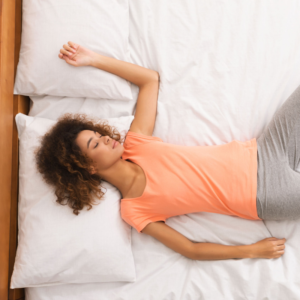
Regular exercise has been shown to positively impact sleep quality (6). This is not the equivalent as taking a “sleeping pill” so just because you do a workout one day doesn’t mean you’ll sleep like a baby. The benefits really kick in when you exercise regularly.
Cardiovascular exercise can release endorphins (feel good chemicals) that improve your mood. Enjoying the benefits of this regularly can help you transition into a more relaxed state and stabilize your mood, making it easier to fall asleep faster and enjoy deeper sleep.
Don’t exercise too close to bedtime however, as the brain needs time to wind down after these chemicals are released. When we exercise, our core temperature rises, and then begins to fall again after 30-90 minutes. As the body cools, we feel relaxed. Be sure to give your body a nice window (of 1-2 hours) to cool down after exercise before bedtime if you’re training at night.
6. Exercise Boosts Your Brainpower

More hormones are released during exercise, which create a nourishing environment for our brain cells. For instance the reduction of stress hormones from the effects of the “runners high” are associated with cell growth in the hippocampus, the region of the brain responsible for memory and learning (8).
Exercise stimulates brain plasticity (an important factor behind learning) by stimulating the growth of new connections between cells. It can improve our IQ and fuels our higher level thinking skills–making it easier for us to problem-solve, plan, organize and multi-task.
7. Exercise Supports Healthy Skin
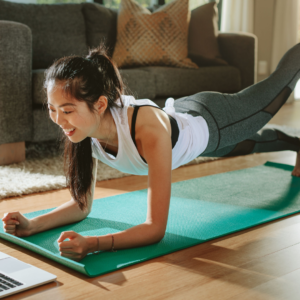
Exercise increases blood flow through the entire body, including the skin – carrying fresh oxygen and nutrients to cells, and removes waste products that can positively impact skin cell health.
Exercise also positively impacts our stress response. One of the hormones commonly associated with stress is cortisol, which breaks down collagen, making your skin age faster. While many methods of stress reduction can effectively guard against this, regular exercise can also help moderate cortisol through its stress reducing mechanism.
To sum it up, making exercise a regular part of your life is totally worth it, and adds so much positive potential for your body – and your long-term health.
The only question I have is, what workout are you going to do next?
Get constant workout motivation, health and fitness guidance and ongoing support in ROCK YOUR LIFE – my online home workout studio and women’s fitness community!
Hope (pictured below) is one of our longtime Rock Your Life members and her testimonial reflects the benefit of consistent, regular training!
Get a 30-day Trial right here.
- Blumenthal, James A. et al. “Is exercise a viable treatment for depression?” National Center for Biotechnology Information, U.S. National Library of Medicine. July/August 2012. Web. https://www.ncbi.nlm.nih.gov/pmc/articles/PMC3674785/
- Pedersen, Bente K. and Febbraio, Mark A. “Muscle as an Endocrine Organ: Focus on Muscle-Derived Interleukin-6.” American Physiological Society, Physiological Reviews. October 2008. Web.
https://journals.physiology.org/doi/full/10.1152/physrev.90100.2007 - Tidball, James G. and Villalta, S. Armando. “Regulatory interactions between muscle and the immune system during muscle regeneration.” The American Journal of Physiology – Regulatory, Integrative and Comparative Physiology. March 2010. Web. https://www.ncbi.nlm.nih.gov/pmc/articles/PMC2867520/
- Arsenis, Nicole C. et al. “Physical activity and telomere length: Impact of aging and potential mechanisms of action.” Oncotarget. March 2017. Web. https://www.ncbi.nlm.nih.gov/pmc/articles/PMC5546536/
- Vuori, I. M. “Health benefits of physical activity with special reference to interaction with diet.” Public Health Nutrition, Cambridge Core. April 2001. Web. https://pubmed.ncbi.nlm.nih.gov/11683546/
- Kline, Christopher E. “The bidirectional relationship between exercise and sleep: Implications for exercise adherence and sleep improvement.” American Journal of Lifestyle Medicine. November/December 2014. Web.
https://www.ncbi.nlm.nih.gov/pmc/articles/PMC4341978/ - Erickson, Kirk I. et al. “Physical activity, fitness, and gray matter volume.” Neurobiology of Aging. September 2014. Web.
https://www.ncbi.nlm.nih.gov/pmc/articles/PMC4094356/ - Bjørnebekk, Astrid et al. “The antidepressant effect of running is associated with increased hippocampal cell proliferation.” International Journal of Neuropsychopharmacology. March 2005. Web. https://pubmed.ncbi.nlm.nih.gov/15769301/
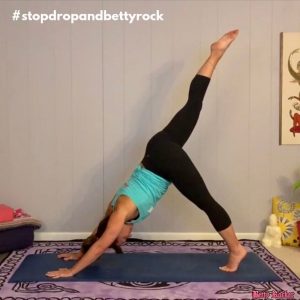 Aerobic (cardio) exercise: examples include walking, running, cycling, swimming and activities that involve movements of the large muscles of the body for sustained periods of time which improves cardiovascular health.
Aerobic (cardio) exercise: examples include walking, running, cycling, swimming and activities that involve movements of the large muscles of the body for sustained periods of time which improves cardiovascular health.